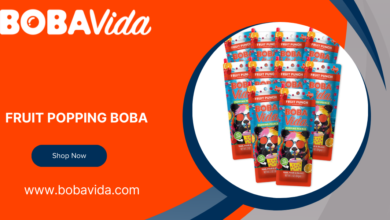
Homebrewing is a craft that lets in beer fanatics to create particular brews tailored to their tastes. While brewing entails many steps, carbonation is crucial for attaining that gratifying fizz and enhancing the overall drinking enjoy. Perfect carbonation brings out the flavors and aromas of your beer, giving it the right mouthfeel. Whether you’re new to homebrewing or seeking to refine your approach, this guide will assist you master the artwork of carbonation.
Understanding Carbonation
Carbonation in beer is the result of dissolved carbon dioxide (CO2) fuel, which bureaucracy bubbles while the beer is poured into a pitcher. The stage of carbonation affects the beer’s texture, appearance, and flavor. Too little carbonation can make the beer flat, even as too much can bring about an overly fizzy drink that loses its stability.
Methods of Carbonating Homebrew
There are two number one strategies to carbonate homebrew beer: natural carbonation and forced carbonation.
1. Natural Carbonation
Natural carbonation occurs whilst yeast consumes additional sugar introduced to the beer earlier than bottling, producing CO2 as a byproduct. This approach requires patience but can yield extraordinary results with the proper method.
Steps for Natural Carbonation:
- Calculate the Priming Sugar: The quantity of sugar required relies upon on the favored carbonation level and the beer fashion. Use an internet priming sugar calculator to decide the right amount based totally for your beer’s volume, temperature, and carbonation target.
- Choose Your Sugar: Corn sugar (dextrose), desk sugar (sucrose), or dry malt extract (DME) are common alternatives for priming. Each sugar kind has exclusive fermentability, so the amount wished may additionally range.
- Dissolve the Sugar: Boil the calculated amount of sugar in a small quantity of water for 5-10 mins to sanitize it. Let the answer cool before adding it to the beer.
- Mix the Sugar Solution: Gently stir the sugar solution into the beer simply earlier than bottling, ensuring even distribution without introducing an excessive amount of oxygen.
- Bottle the Beer: Fill sanitized bottles with the primed beer, leaving about an inch of headspace. Cap the bottles securely.
- Condition: Store the bottles at room temperature (sixty five-seventy five°F) for 2-three weeks to allow carbonation to develop. Afterward, chill the beer and enjoy.
2. Forced Carbonation
Forced carbonation involves the usage of a CO2 tank to at once carbonate the beer, supplying extra manage and quicker consequences. This method is right for people with kegerators or draft systems.
Steps for Forced Carbonation:
- Chill the Beer: Cold beer absorbs CO2 extra efficaciously. Place your keg within the fridge and chill it to around 35-40°F. becomes bubbly as beer nyt
- Set the CO2 Pressure: Connect the CO2 tank to the keg and set the regulator to the favored stress (normally 12-15 PSI for most beer patterns). The pressure determines the carbonation stage, so consult with a carbonation chart for steering.
- Carbonate Slowly: Allow the beer to carbonate over 1-2 weeks, preserving the CO2 tank connected. Gently rock the keg from time to time to speed up the manner if desired.
- Quick Carbonation Method: For faster effects, you can boom the strain to 30 PSI and rock the keg to and fro for about five-10 minutes. Lower the stress back to serving tiers (12-15 PSI) afterward. Be cautious with this approach, as it may effortlessly lead to over-carbonation.
- Test and Adjust: Sample the beer to test carbonation tiers. If it’s too low, preserve carbonating; if it’s too excessive, launch some strain and let the beer settle.
Troubleshooting Carbonation Issues
Even with cautious preparation, issues can get up in the course of carbonation. Here’s a way to deal with not unusual issues:
- Flat Beer: If your beer is below-carbonated, it is able to want extra time at room temperature or extra priming sugar. For compelled carbonation, test for leaks in the CO2 device.
- Over-carbonation: Over-carbonated beer may be because of too much sugar or stress. Release excess pressure by using lightly opening bottles or venting the keg.
- Uneven Carbonation: Ensure even mixing of the priming sugar and avoid introducing oxygen. Store bottles consistently at the proper temperature.
Conclusion
Perfect carbonation is critical for a nicely-rounded homebrew. Whether you decide upon the traditional technique of natural carbonation or the manipulate supplied via compelled carbonation, following those steps will help you achieve the desired end result. Experiment with distinctive ranges of carbonation to discover the correct balance on your beer style, and revel in the culmination of your homebrewing hard work with a wonderfully carbonated brew. Cheers! Read more…

